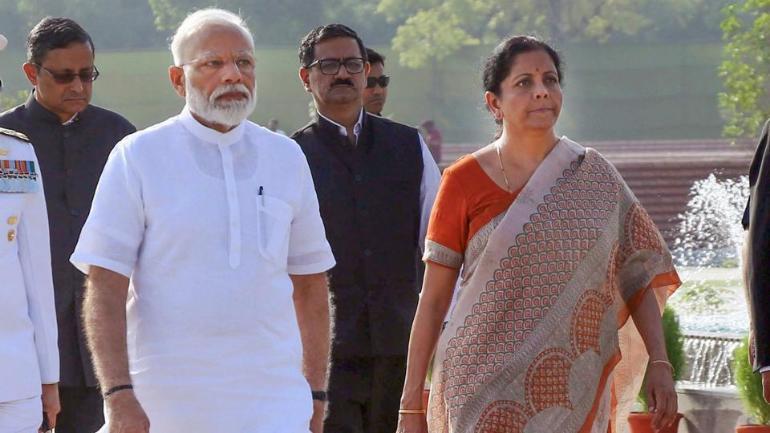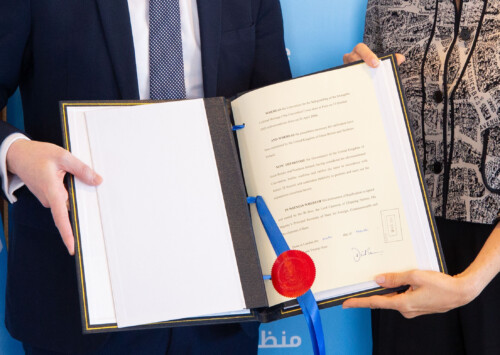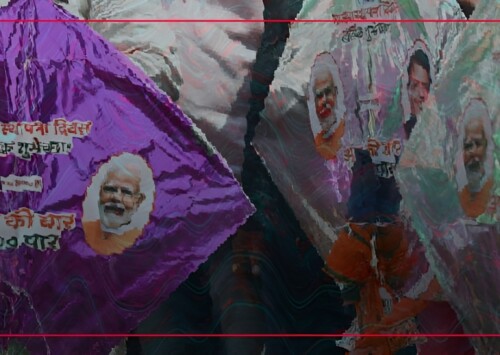Can Sitharaman steer the Indian economy out of troubled waters?

Union finance minister Nirmala Sitharaman, who will present her first budget for 2019-20 on July 5 has several challenges on hand
With less than a month to go for a full fledged budget, union finance minister Nirmala Sitharaman, who will present her first budget for 2019-20 on July 5, has several challenges on hand.
The first budget of Modi 2.0 government is scheduled to be presented on July 5 by finance minister Nirmala Sitharaman who is also the second woman to assume the office of finance minister after late former prime minister Indira Gandhi in 1970. However, Sitharaman has taken over at a time when Asia’s third largest economy is stuttering. A dozen of challenges awaits the new finance minister.
Fiscal deficit: One of the major tasks before the new union finance minister, Nirmala Sitharaman, is whether she will be able to maintain the fiscal deficit target in her new role besides measures for reviving the economic growth in the country when she presents her maiden Union Budget 2019 on July 5. She may project a fiscal deficit target of 3.4 pc of the gross domestic product (GDP) for 2019-20, sticking to the figures in the interim Budget of February 1. The fiscal accounts are already under severe pressure now because of low tax collections.
The previous Narendra Modi government had managed to meet the revised fiscal deficit target of 3.4 pc of the GDP in fiscal 2019 after it cut last minute expenditure and rolled over fuel subsidies to make up for the shortfall in tax collection. (The fiscal deficit is the difference between the government’s total revenue and total expenditure. It is an indication of the total borrowings required by the government. This is an important parameter to gauge the government’s overall performance and the sustainability of growth in the future.)
The interim Budget presented in February this year had revised upward the fiscal deficit target to 3.4 pc from 3.3 pc of the GDP estimated earlier for 2018-19.
Economic growth: Her second big challenge is to arrest the slowdown. India is witnessing a slowdown in growth over the past five few quarters. In the third quarter of 2018-19, India’s GDP growth slipped to 6.6 pc after growing to 8.2 pc in the first quarter and 7.2 pc in the second quarter. The GDP growth for the fourth quarter ended March 2019 which indicated that it has slowed down to 5.8 pc.
Spur demand: Another test is on how to boost consumption. Consumption of housing, autos, FMCs has slowed down for more than a year now. It is to be seen how she addresses this-whether putting money in the hands of buyer by lowering income tax or tax concession for producers?
Boost investment: Indian economic growth has been short-circuited due to a sharp slowdown in investment. Fiscal 2018-19 ended with new investment proposals adding up to a dismal INR 9500 billion. This is the lowest investment proposal recorded in a year since 2004-05, that is, in 14 years.
Unemployment: Joblessness remains a major concern in the country of 1.3 billion people. Various estimates suggest that half the youth in India are aged 25, of which, 19 million are expected to be jobless by the end of 2019, according to a 2018 report by the International Labour Organisation (ILO).
Also, data compiled by Centre for Monitoring Indian Economy (CMIE) revealed that employment rate in the country rose to 7.2 pc in February. So the onus now lies on the Modi government to resolve to create jobs. About 8.1 million jobs are required every year.
Capital infusion: The public sector banks are in bad shape on the account of non-performing assets (NPAs) despite pumping in over INR 2 trillion in the past two years. The closing balance of NPAs of all scheduled commercial banks (SCBs), which was close to INR 8 trillion in 2016-17, rose to INR 10.4 trillion in 2017-18.
Finance for infrastructure: India needs infrastructure to grow, but there’s hardly anyone to fund it. Creating fiscal space for capital investment of around INR 25,000 billion annually in the infrastructure sector will be another priority for the finance ministry.
Simplify GST: The new return form for the GST is ready and a pilot is also going on. Now, she will have to push for the implementation according to the schedule and then introduce some more changes, both in the return and the e-Way bill. There is also strong pressure to bring down the 28 pc GST rate on cement. But lowering the rate to 18 pc could cost the exchequer up to INR 130 billion.
Disinvestment: Disinvestment has been talked about for a long time with no action. The market value of the government’s stock holdings in more than 80 listed PSUs is reportedly over INR 18,000 billion. NDA government is likely to initiate disinvestment of Public Sector Units (PSUs). As part of this agenda, it has to be seen how government initiates disinvestment of various PSUs.
Soon after the victory of the NDA in the Lok Sabha elections, Arvind Panagariya, an Indian-American economist, called for privatising one public sector company every week for the rapid economic growth of the country. Panagariya is also a professor of economics at the Columbia University. He also served as the first vice-chairman of NITI Aayog between January 2015 and August 2017.
Weak exports: India’s exports grew by 9 pc to USD 331 billion in 2018-19. But exports story is likely to face serious hurdles on account of rising protectionism and trade war between the US and China. Sitharaman who in her previous avatar was commerce minister besides defence minister will have to strive hard to address infrastructure bottlenecks to impart competitiveness to exports. The slowdown in export has hurt the manufacturing sector, and in turn, jobs. Similarly, on the external front, there is a need to boost the FDI by providing more incentives.
Boost farm sector: The new finance minister will also have to ensure that the agriculture sector is given a boost to improve the lot of the farmer and help them double their income by 2022 as promised by the previous Modi government. Agriculture, forestry and fishing all three put together under the head of agriculture comprised 21 pc of gross domestic product (GDP) in 2004-05. It has dropped to around 13 pc in the past 15 years. But the number of workforce has not dropped accordingly in farms.
Agriculture employs nearly 55 pc of the workforce in the country. An estimated 260 million people are working in the sector. This translates into dependence of about 55-57 pc population on agriculture.
Nirmala’s challenge is not only hers. It is a challenge faced by India. It is to be seen how she steers the Indian economy through her first union budget out of the troubled waters.









